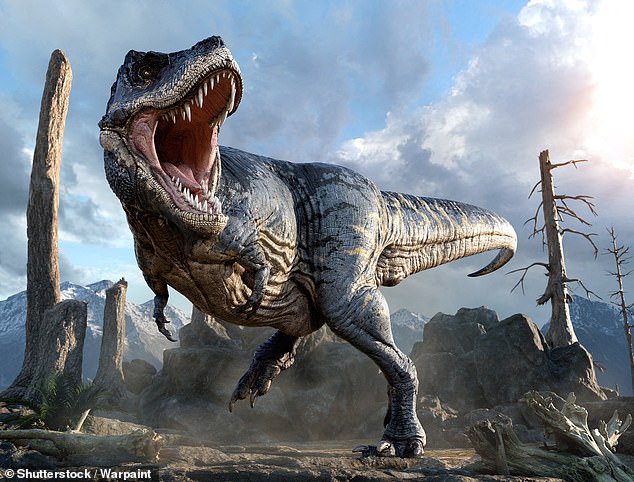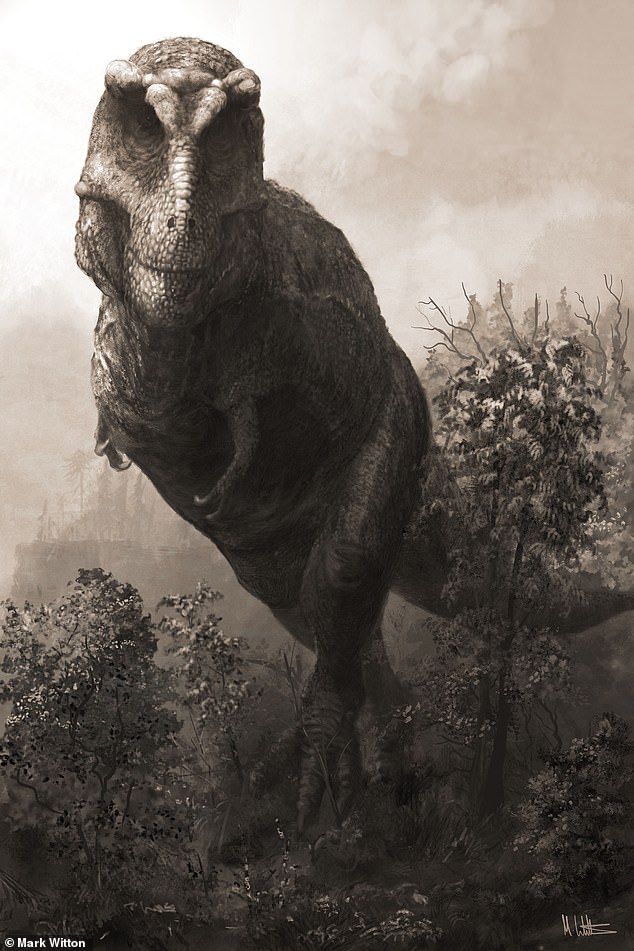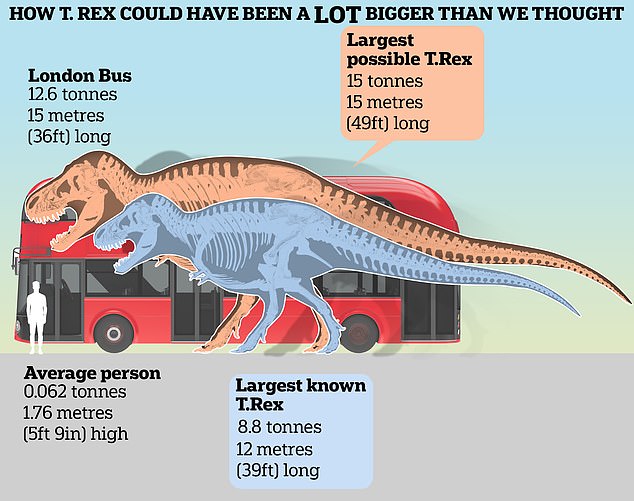- Researchers used computer models to observe the maximum size of dinosaurs
- The T. Rex could have weighed up to 15 tons and reached 15 meters in length.
With 60 razor-sharp teeth and jaws so powerful they could crush a car, the King of the Dinosaurs would have already been a terrifying sight.
But if that wasn’t enough, T. Rex may have been 70 percent heavier than previously thought, weighing up to 15 tons, according to one study.
Researchers have used computer models to observe the maximum size of dinosaurs, using the famous T. Rex as an example.
Since the incredible sizes reached by many dinosaurs make them a source of endless fascination, the question was raised as to how these animals evolved to become so large.
The team used computer models to assess T. Rex, taking into account factors such as population size, growth rate, life expectancy and more.
T. Rex may have weighed as much as 15 tons, compared with current estimates of 8.8 tons. And it may also have been 25 percent longer, reaching 15 meters instead of 12.

With 60 razor-sharp teeth and jaws so powerful they could crush a car, the King of the Dinosaurs would have already been a terrifying sight.
Paleontologists found that the largest known T. Rex fossils likely lie in the 99th percentile (representing the top 1 percent of body size), but finding one would require digging for fossils for another 1,000 years.
Computer models suggest that the largest individual that could have existed could have been 70 percent more massive than the largest known living specimens.
If true, the animal could have weighed up to 15 tons, compared with current estimates of 8.8 tons.
And they could also have been 25 percent longer, reaching 15 meters instead of 12.
The research, published in the journal Ecology and Evolution, was carried out by a team from Queen Mary University of London and the Canadian Museum of Nature in Ottawa, Canada.

The largest individual that could have existed could have been 70 percent more massive than the largest specimens currently known (artist’s impression)
Dr Jordan Mallon, one of the study’s authors, said: ‘Our study suggests that for large fossil animals like T. Rex, we really have no idea from the fossil record of the absolute sizes they might have reached.
‘It’s fun to think about a 15-ton T. Rex, but the implications are also interesting from a biomechanical or ecological perspective.’
Meanwhile, a separate study suggests that T. Rex may also have had iron-coated teeth that helped it tear apart its prey.
Researchers have discovered that the serrated edges of Komodo dragons’ teeth are tipped with iron, which may provide clues about how dinosaurs killed and ate their food.
Dr Aaron LeBlanc, lead author of the study from King’s College London, said: ‘Komodo dragons have curved, serrated teeth for ripping and tearing at their prey just like those of carnivorous dinosaurs.
‘We want to use this similarity to learn more about how carnivorous dinosaurs might have eaten and whether they used iron in their teeth in the same way as the Komodo dragon.
‘Unfortunately, with the technology we currently have we cannot see whether fossilized dinosaur teeth had high levels of iron or not.
We believe that chemical changes that take place during the fossilization process hide the amount of iron present at the beginning.


